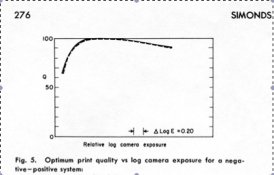When I first started shooting 4x5 I did a lot of research on this. This is what I found.
- Everyone has their own methods that seem to have worked for them.
- Spotmeters are more frequently used for large format than with other formats.
- The Zone System is very, very popular with most large format photographers.
- If you let it, it can become very, very confusing.
- Then I looked at some of Weegee's photos.
I thought to myself, during Arthur Fellig's (Weegee) time, the 4x5 Speed Graphic WAS the 35mm. It can't be that tough.
So this is what I did for myself.
- I shoot Arista EDU Ultra 400 film, rated at ISO 200, in my Crown Graphic. (It is very inexpensive.)
- During the day I set my aperture to f/16 and leave it there. (I would use f8 but 4x5 has far less DOF.)
- I adjust my exposure using my shutter speed.
- When I first walk outside I take one reading with my L-208 in the sunny areas and one in the shady areas.
- I write those shutter speeds for those readings on the back of my hand.
- After that I don't worry about it; just set my shutter speed to reflect the lighting on the subject.
- If things change a lot (rarely) I take more readings.
- I adjust for very bright or very dark backgrounds, exactly as I would with my 35mm.
- If the lighting is very tricky I meter every shot, again, exactly as would with my 35mm.
- Indoors I use a flash, just like Weegee would have.
You know what? Somehow it all works out.
Finally, I DEFINITELY bracket if I am taking a photograph that is very important to me where the chance of repeating later is low. Not doing so is just plain silly. Even with large format, film is still cheap. Besides, because I am a perfect human being I have made some pretty dumb mistakes in my time. Like forgetting to remove...or replace, the dark slide, and other mess ups we won't discuss for lack of time and space.
YMMV. Not everyone likes this method as it will be to lazy for them. Part of their enjoyment comes from spending a great deal of time trying to study out the correct exposure to fit their visualization of their scene. To each his own but large format really is not that tough.
And I don't do anything different with my Deardorff V8. It is just a lot more to pack around so I don't use it quite as much as I shoot my Crown Graphic or Graflex Auto RB.
EDIT - If you want some attention try taking street photos at a motorcycle rally with a Speed.














